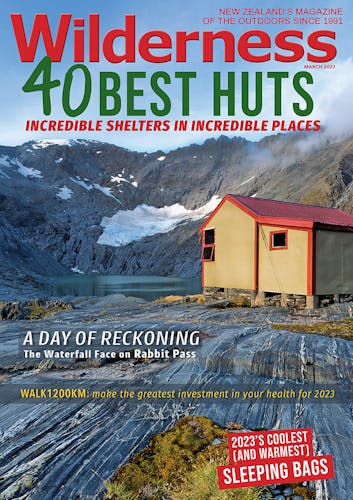Several features in the Southern Alps are named after polar explorers. These four make admirable destinations for trans-alpine trampers.
Ernest Shackleton’s escape from Antarctica after his ship, Endurance, was crushed and sunk is arguably the greatest survival story of all time. One of my summer reads was a recent biography of the famous Anglo-Irish Antarctic explorer by Ranulph Fiennes.
Shackleton tried three times to reach the South Pole during the so-called ‘heroic age’ of polar exploration. Although he failed every time, he is revered for his ability to survive, his superb leadership, and the fact he never lost a man under his direct control. Perhaps the only polar survival story to match Shackleton’s is that of Norwegian explorer Fridtjof Nansen.
Nansen was a pioneer of polar exploration. He made his own portable multi-fuel stove which, crucially, enabled long-distance travel over ice expanses devoid of wood for fuel. Another Nansen innovation was his understanding of what motivated men to endure long polar journeys. During the 1880s, one of the great polar prizes was the first crossing of Greenland. Every previous expedition had set out from the settled parts of Greenland, but all had failed about halfway over the icecap and retreated. Nansen reasoned that by starting on the opposite, uninhabited side of Greenland, all his team’s motivation would be to actually keep going, as only by crossing the icecap could they reach the haven of civilisation. Genius! In 1888, he succeeded with a lightweight team of six who completed the 420km traverse in 49 days.
Afterwards, Nansen turned his attention to the North Pole, and again proved his originality and daring on a four-year expedition of 1893-96. He designed a specially strengthened ship, the Fram, aiming to deliberately become frozen in the northern polar sea ice, and then drift towards the pole on the ocean currents. After nearly two years of frozen drifting, Nansen and his companion Hjalmar Johansen set off from the Fram, headed across the sea ice pole-wards, with dogs hauling supplies and light kayaks on sleds. Although the Norwegian pair failed to make the pole, they set a new record for reaching the furthest north (86°13.6’N) and survived for 15 months on the ice, an incredible feat of endurance in such extremes. Eventually, they reached Franz Josef Land in their kayaks. Remarkably, they were rescued there, completely by chance, by English explorer Frederick Jackson, who had been inspired to start his own expedition only after hearing a Nansen lecture in Britain.
Fittingly enough, several features in Kā Tiritiri o te Moana / the Southern Alps are named after polar explorers, including Shackleton and Nansen. Some of them make admirable destinations for suitably experienced trans-alpine trampers, including these detailed here.

1. Mt Amundsen, Mt Aspiring National Park
Along with Nansen, Amundsen is the most famous of Norwegian polar explorers. Amundsen made his name by becoming the first to navigate the infamous Northwest Passage through the Arctic, then successfully reached the South Pole, beating Robert Falcon Scott. Both expeditions used Nansen’s Fram. Mt Amundsen (2317m) can be seen from the wonderful Whitbourn Valley, accessible from Cattle Flat on the Rees–Dart Track.
2. Nansen and Johansen Peaks, Mt Aspiring National Park
Johansen Peak (2070m) and Nansen Peak (2008m) are significant summits on the remote Barrier Range, which rises high above the Dart Valley. It’s possible to reach the Barrier Range from Daleys Flat Hut using a route beside the Margaret Burn and up onto Seal Col, from where Johansen Peak is an easy climb (although Nansen Peak is much more inaccessible).
In a sad aside, Hjalmar Johansen later joined Roald Amundsen’s South Pole expedition. But after arguing with Amundsen, Johansen was left out of the successful polar party. He never fully recovered, reverted to alcoholism and committed suicide in 1913. He was largely forgotten until a biographer highlighted his achievements in 1997.
3. Shackleton Glacier, West Coast
The Whataroa River and its tributaries are spectacular places, with high mountains, steep glaciers and meltwater lakes. Although tough gorge-going, tracks lead up the Whataroa to Butler Junction Hut and Top Butler Hut. Beyond is Ice Lake, which occasionally freezes in winter and bears a strong resemblance to an Antarctic scene. Fittingly enough, four of the glaciers here are named after polar explorers: Nansen and Shackleton, as well as the Australian Douglas Mawson and Englishman Gino Watkins.
4. Dennistoun Glacier, Aoraki/Mt Cook National Park
What about New Zealanders? While calling him a polar explorer is a stretch too far, Jim Dennistoun was a pioneering explorer and mountaineer, whose first ascent of Mt D’Archiac was a master class in daring. In 1911-12, Dennistoun visited Antarctica, when he accompanied the ship Terra Nova south during the relief journey for Scott’s ill-fated South Pole expedition.
He survived all his Southern Alps journeys and the Antarctic trip only to die from wounds in a German prison camp during the First World War. Commemorating Dennistoun are a peak and glacier in the head of the Godley Glacier, New Zealand’s second longest. Nearby is Terra Nova Pass, an exhilarating trans-alpine route leading into the Rangitātā








